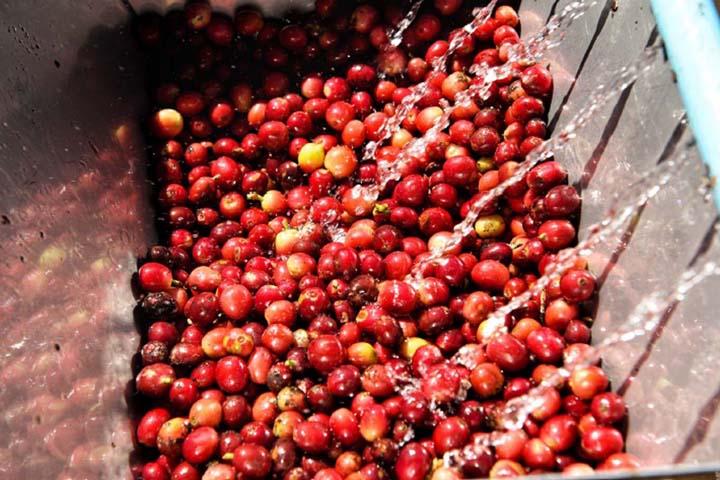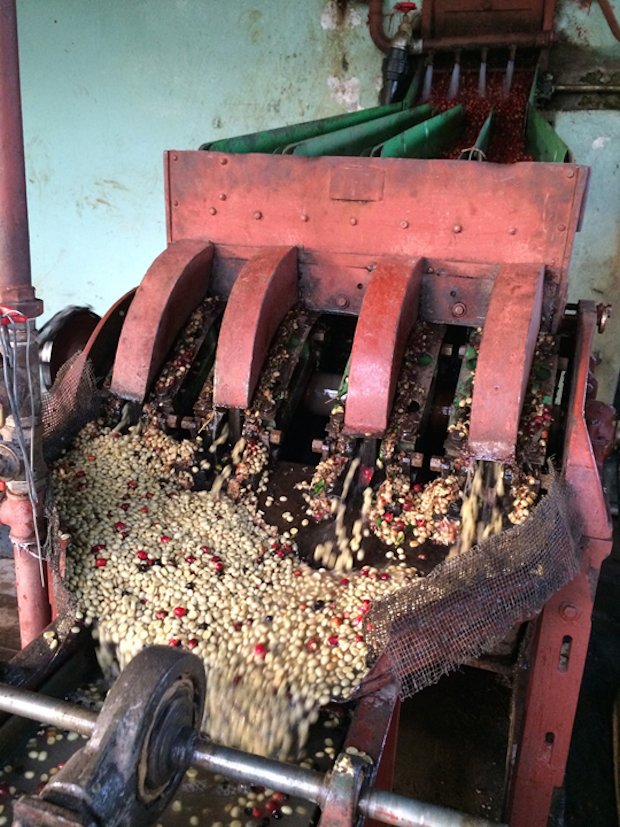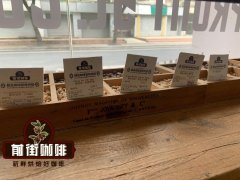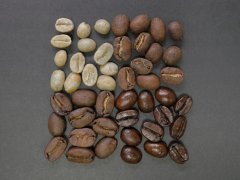Introduction to the difference of flavor and taste between carbon dioxide impregnated coffee beans and anaerobic treated coffee beans
One of the rapidly popular new processes that can produce an incredibly unique flavor involves anaerobic fermentation, which is called carbonic acid impregnation. Let's first break down the terminology here so as not to get caught up in the details.
Anaerobic-anaerobic environment
Carbon dioxide-an environment rich in carbon dioxide
Impregnation, a more inclusive term than fermentation, refers to microbial metabolism

In a sense, anaerobic and carbonic acid can be used interchangeably-both refer to limited oxygen. You may also notice that the scientific definition of fermentation includes the word "anaerobic", so the word "anaerobic fermentation" is superfluous in a sense. To be clear, even if there is oxygen in the environment around the fermentation microorganism, it will not be used in a specific fermentation process. This is not to say that aerobic impregnation did not occur; it is true, because many microbes like oxygen and can digest coffee fruits. This is why these terms do make sense in the context of coffee. Since we have been talking about the limited ways in which coffee can be fermented for a long time, we need to be more specific when the usual process changes. Throughout the history of washed coffee production, the period of impregnation of starched coffee-usually in open-air cans or buckets or even plastic bags-has been called "fermentation". Its origin is function, not form. This is just a method used by farmers to remove sticky fruit mucus from parchment-covered coffee seeds. Although the flavor change is important, we mainly get rid of fructose and pectin.

Now we are looking at the complexity of microbiology and its effect on flavor, and more precise terminology is needed to help distinguish whether farmers are traditionally fermenting or using more specific methods. As a result, the rise of "anaerobic" fermentation in coffee. When coffee farmers use the word, they usually mean that they have created a sealed environment. Usually, the coffee is beaten as usual, and then the mucus parchment is put into a sealed can, usually a stainless steel can, with a valve to allow exhaust. In some cases, this fermentation may extend the traditional time of 12-36 hours by hours or even days. The types of microorganisms that can survive and actively participate in fermentation are limited by hypoxia in the air and may significantly change the final flavor characteristics. The anaerobic coffee I've tasted recently has incredibly accurate and immediately recognizable flavors such as gingerbread, cinnamon, licorice, bubblegum or boiled pears. The taste is often single, highly expressive and unusual. The main factor that distinguishes anaerobic coffee fermentation from carbonic acid impregnation is that in carbonic acid impregnation, cherries remain intact and are not pulped before entering the sealed tank. Carbon impregnation is a term extracted from the wine industry in which whole grapes are fermented without squeezing juice. This tends to produce fresh fruit-flavored wines that may not age well but are ready to drink soon after production. In the carbonation process of coffee fermentation, the coffee fruit is first siphoned to remove low-density "floating matter" and then added to a closed tank with an one-way valve, which is very similar to the anaerobic method. As the cherry skin is intact, it may take days or weeks to ferment. Different degrees of pressure in the tank will produce different available sugars and pectin for microbial impregnation. Near the bottom of the pot, the coffee is gently squeezed by gravity over time, while the cherries near the top of the pile remain unpressed, and the fermentation will be slow and almost entirely in the skin of the fruit.
Important Notice :
前街咖啡 FrontStreet Coffee has moved to new addredd:
FrontStreet Coffee Address: 315,Donghua East Road,GuangZhou
Tel:020 38364473
- Prev

How to choose the degree of grinding of hand-brewed coffee the effect of grinding degree on coffee the benefits of preserving freshly ground coffee powder
Many coffee enthusiasts can't make a cup of coffee at home. They ignore the most valuable but easily overlooked factor, grinding. Only a small adjustment is needed to avoid this problem. Have you thought about how you should grind your coffee? What kind of equipment do you need? What kind of grinding grade? The goal of choosing the grinding size is: from your
- Next

What is Agtron? What is the effect of different readings of coffee roasting color classification on coffee flavor and taste
Agtron may sound like an agricultural superhero robot, but behind its name lies a simple coffee roasting test: consistency. Agtron uses near infrared light to analyze the color of ground or whole bean coffee. Then output an easy-to-read number that represents the degree of baking. The smaller the number, the darker the roast. For example, Agtron reading for espresso roasting
Related
- Detailed explanation of Jadeite planting Land in Panamanian Jadeite Manor introduction to the grading system of Jadeite competitive bidding, Red bid, Green bid and Rose Summer
- Story of Coffee planting in Brenka region of Costa Rica Stonehenge Manor anaerobic heavy honey treatment of flavor mouth
- What's on the barrel of Blue Mountain Coffee beans?
- Can American coffee also pull flowers? How to use hot American style to pull out a good-looking pattern?
- Can you make a cold extract with coffee beans? What is the right proportion for cold-extracted coffee formula?
- Indonesian PWN Gold Mandrine Coffee Origin Features Flavor How to Chong? Mandolin coffee is American.
- A brief introduction to the flavor characteristics of Brazilian yellow bourbon coffee beans
- What is the effect of different water quality on the flavor of cold-extracted coffee? What kind of water is best for brewing coffee?
- Why do you think of Rose Summer whenever you mention Panamanian coffee?
- Introduction to the characteristics of authentic blue mountain coffee bean producing areas? What is the CIB Coffee Authority in Jamaica?

